
Ducks belong to the Anatidae family, which also includes geese and swans. They are found all over the world, in both freshwater and saltwater habitats, and are known for their distinctive quacking vocalization. Ducks are omnivores and feed on a variety of foods, including plants, insects, and small fish.
Breeds of Ducks
There are the following breeds of Ducks:
|
 Abacot Ranger Abacot Ranger
|
|
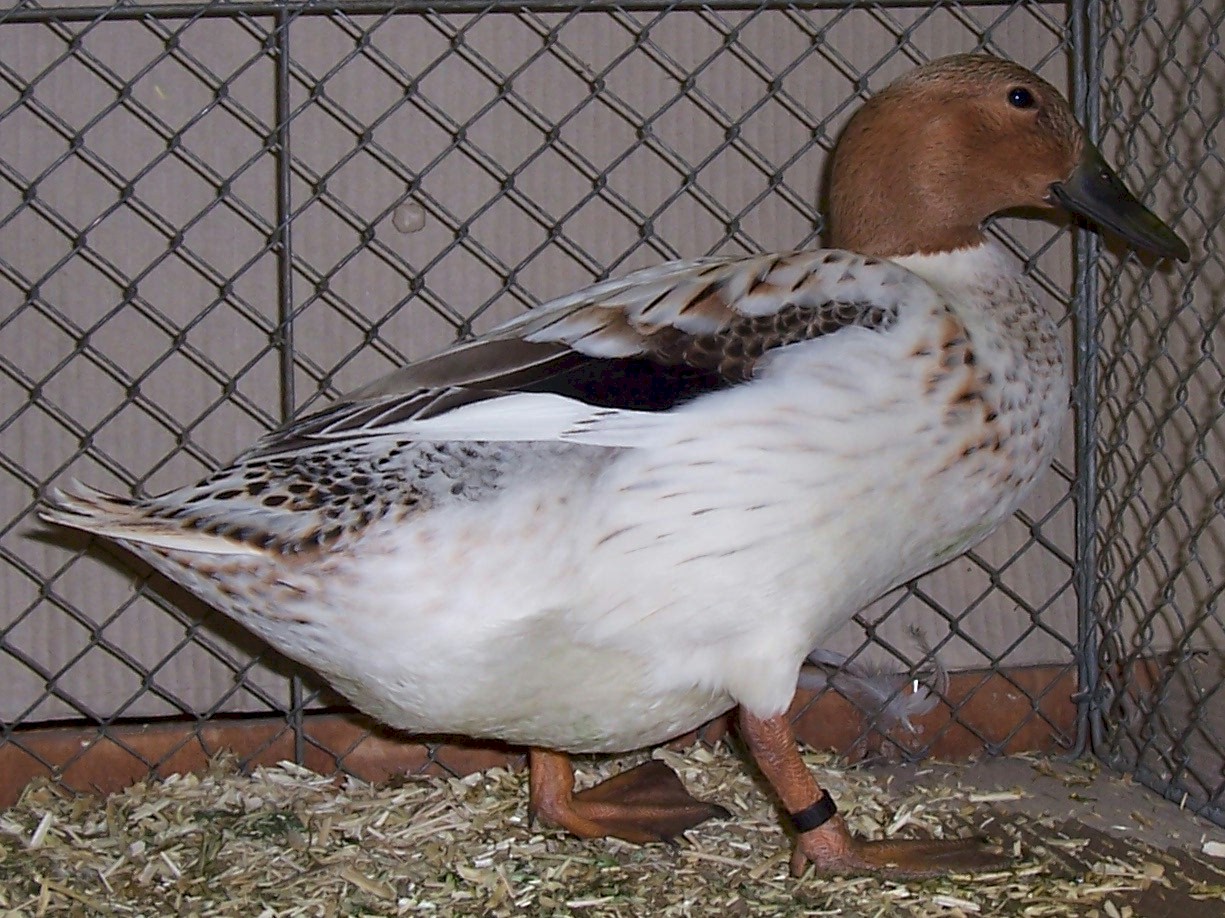
|
The Abacot Ranger is a breed of duck that was developed in the United Kingdom. It was created by crossing the mallard with a runner duck and has been bred for its excellent foraging ability.
Abacot Rangers are a medium-sized breed of duck with a unique appearance. They have a distinctive upright posture and a long, slender neck. They come in a variety of colors, including white, black, and blue. Their bodies are streamlined and
...
|
|
 African Black African Black
|
|
|
The African black duck (Anas sparsa) is a species of duck belonging to the genus Anas. It is closely related to the mallard group, but has distinct differences in its behavior and plumage, and is therefore placed in the subgenus Melananas.
The African black duck is characterized by its black feathers with pronounced white marks on its back, a dark bill, and orange legs and feet. It is a medium-sized duck, measuring 48–57 cm (19–2
...
|
|
 Alabio Alabio
|
|
|
Alabio ducks are native to Indonesia and are believed to have been domesticated there for centuries.
They are medium-sized birds, weighing between 2 and 3 kg on average. They have a distinctive plumage pattern, with a white head, neck, and tail, and a chestnut-brown body and wings. Their bill is greenish-yellow and has a curved shape.
They are known for their friendly and social nature, making them a popular choice as pets.
...
|
|
 Ancona Ancona
|
|
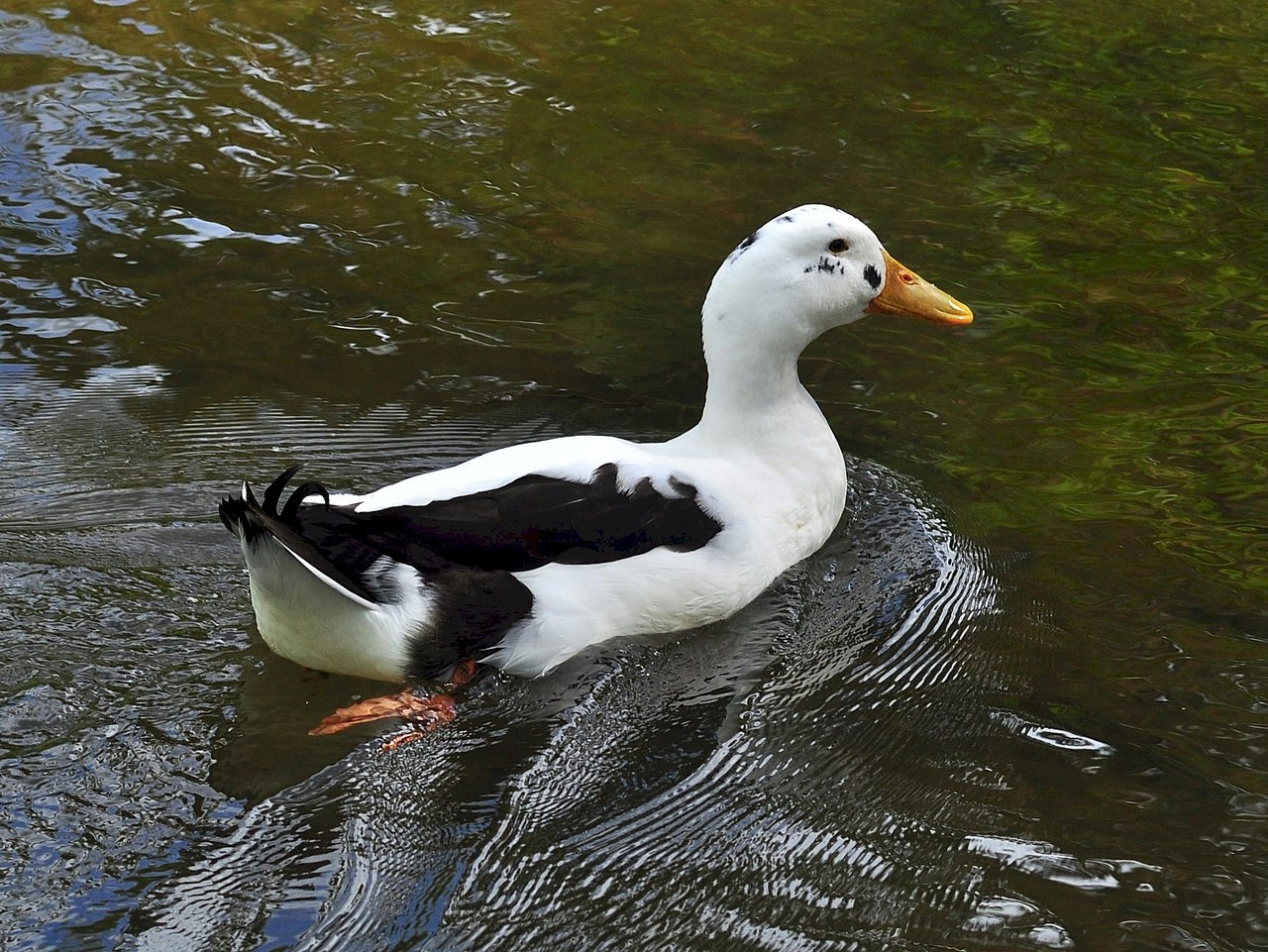
|
Ancona is a breed of domestic duck that is known for its active and energetic personality. They are a multi-colored breed with black and white feathers.
It is believed that they originated in the Italian region of Ancona, hence its name. It is thought to have been developed from mallard and local Italian ducks in the late 19th century.
They are medium-sized birds, weighing between 2 and 2.5 kg on average. They have a distinc
...
|
|
 Australian Spotted Australian Spotted
|
|
|
The name Australian Spotted is somewhat misleading, as this breed of domesticated ducks actually originated in the United States. It was developed by John C. Kriner and Stanley Mason of Pennsylvania, who allowed breeds such as Calls, mallards, pintails, and various Australian wild ducks to crossbreed for several years before selecting the desired specimens. The first exhibition of the Australian Spotted took place in 1928.
...
|
|
 Aylesbury Aylesbury
|
|
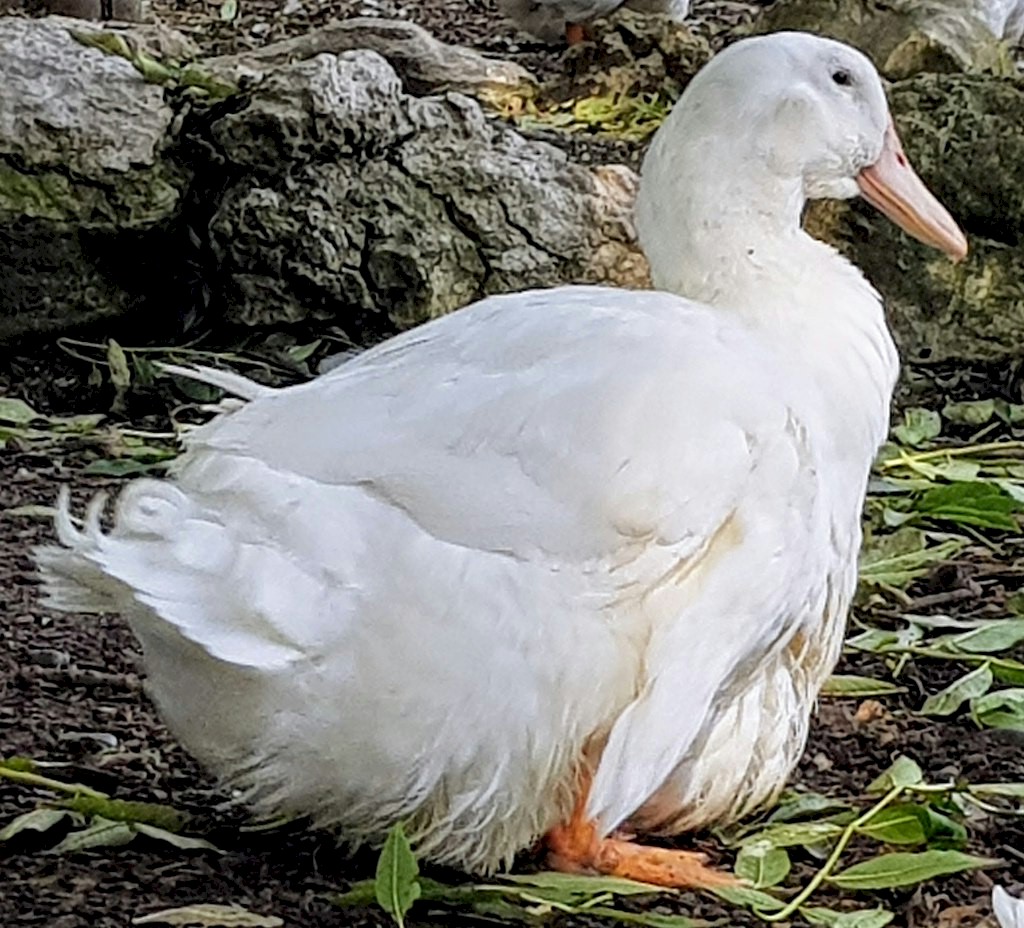
|
Aylesbury ducks are a large breed with pure white plumage, a pink bill, orange legs and feet, an unusually large keel, and a horizontal stance with its body parallel to the ground.
The origin of the Aylesbury duck is not clear. Before the 18th century, there were few records of duck breeds in England, and the common duck, which was raised for farming, was a domesticated form of the wild mallard.
In the 19th century, duck
...
|
|
 Bac Kinh Bac Kinh
|
|
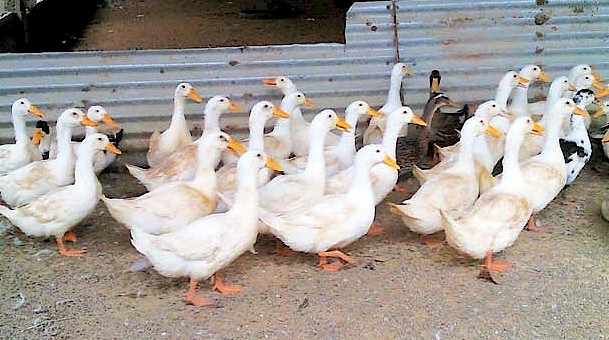
|
Bac Kinh, also known as Bac Ninh, is a breed of duck from Vietnam. The breed is known for its large size and delicious meat, which is why it is highly valued in the country and surrounding regions.
The ducks are raised primarily for their meat and are considered to be a delicacy in Vietnam. Bac Kinh ducks have a distinctive appearance, with a large body, wide breast, and plump legs. They have a layer of fat underneath their skin, which
...
|
|
 Bali Bali
|
|
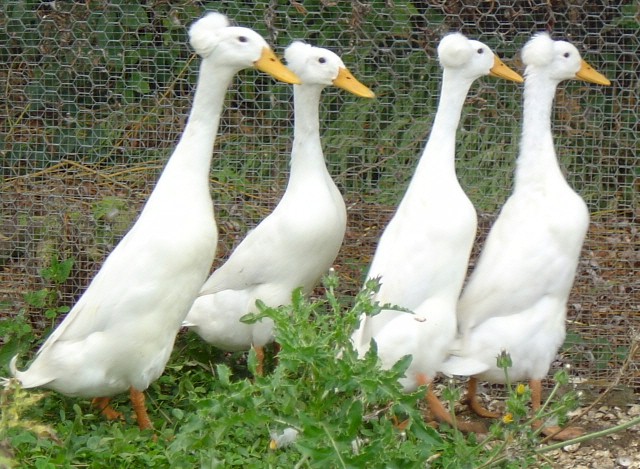
|
The Bali Duck (also known as the Balinese Crested Duck or Crested Runner Duck) is a lightweight breed of domesticated duck raised primarily for decoration or as pets, although they are good layers. It is similar to the Indian Runner Duck, differing only in having a crest on the top of the head.
The Bali Duck weighs around 2.25–2.75 kg (5–6 lb) with a slender, upright body. The body carriage is not as varied as that
...
|
|
 Bashkir Bashkir
|
|
|
Bashkir ducks are a breed of domesticated ducks that originated in Russia. They are named after the Bashkir region in Russia, where they have been bred for their meat, eggs, and feathers. The breed is known for its distinctive appearance, which features a plump body, a round head, and a small bill. They are also known for their friendly and curious nature.
Bashkir ducks are medium-sized ducks and can grow up to 3-5 pounds in weight.
...
|
|
 Bau Bau
|
|
|
Bau ducks are a breed of domestic ducks that are found in Southeast Asia, particularly in the Bau region of Sarawak in Malaysia. They are also known as the Bau Cheeky Duck or the Bau Indian Runner.
The Bau duck is a tall and slender breed, standing up to 20 inches in height, with a long neck and legs. They are known for their upright stance and the characteristic way they carry their heads high. Bau ducks come in a variety of colors, i
...
|
|
 Blekinge Blekinge
|
|
|
The Blekinge duck, also known as the Blekingeanka, is a critically endangered species native to Sweden. With its distinctive white patches and neck, and yellow-orange legs and beaks with black tips, this hardy breed is well adapted to northern climates.
Unfortunately, the population of Blekinge ducks has declined significantly, with only around 200 individuals remaining. This makes them one of the rarest birds in the world.
Hist
...
|
|
 Buff Orpington Buff Orpington
|
|
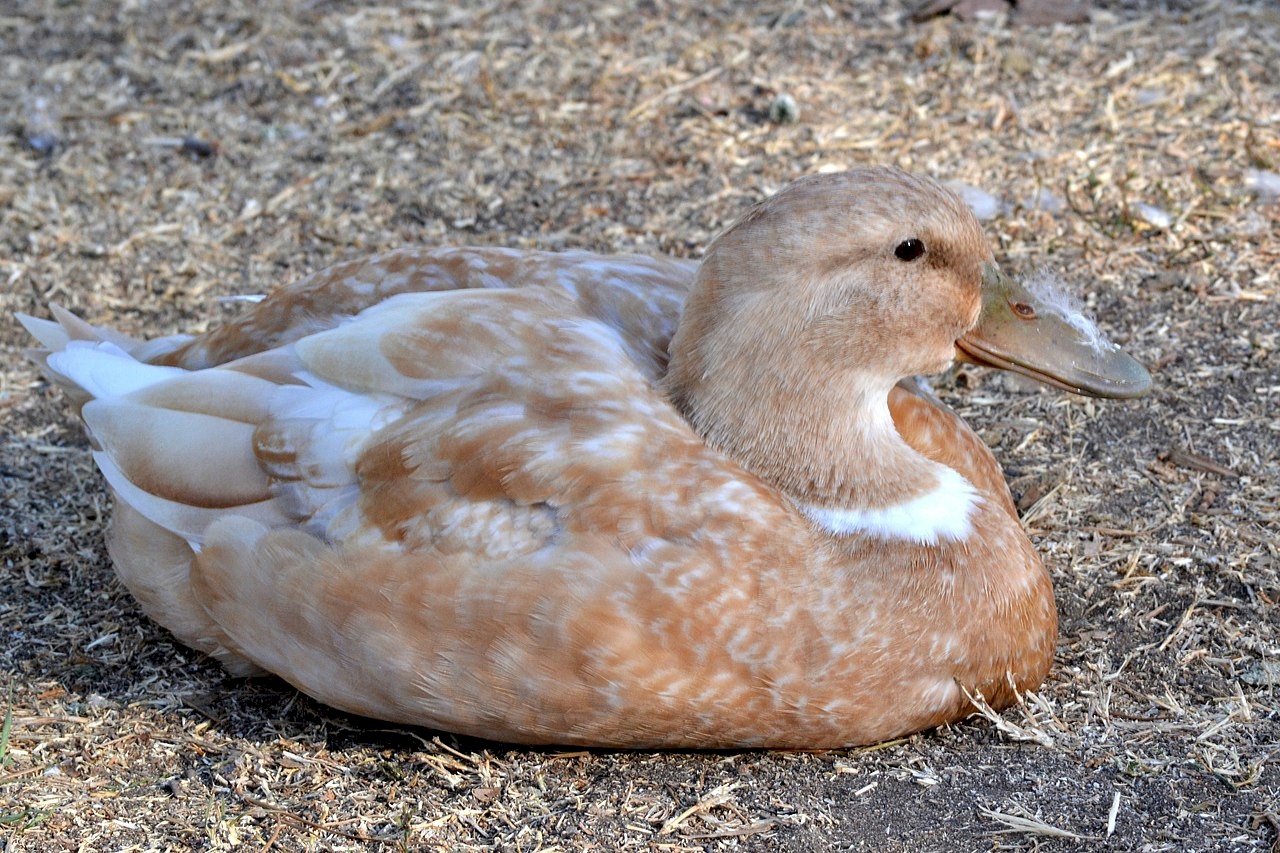
|
The Buff Orpington duck is prized for its meat and egg production, with the ability to lay up to 220 eggs a year. It was created by William Cook of Orpington, Kent, UK, from a selection of mis-marked Blue Orpington ducks and other breeds such as Cayuga, Indian Runner, commercial Aylesbury and Rouen. The breed was introduced to the public in 1897 and was admitted to the British Poultry Standard in 1910 and the American Poultry Association's Standa
...
|
|
 Call Call
|
|
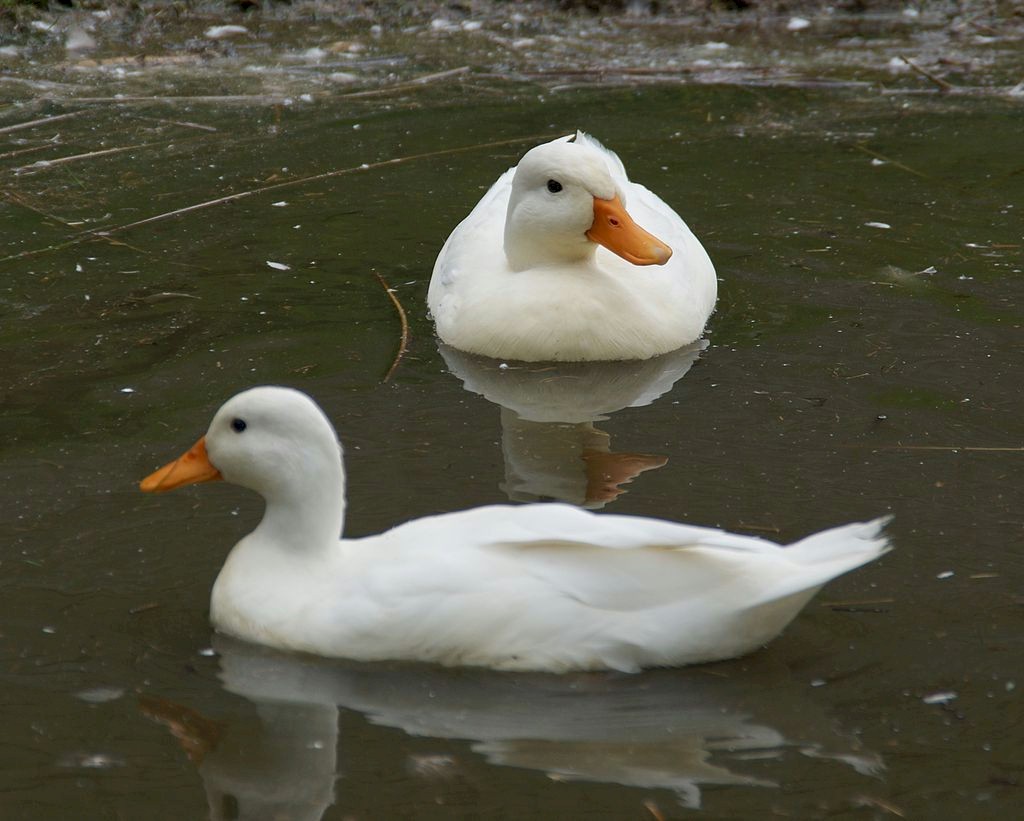
|
The Call is a historic breed of small domestic duck. It is believed to have originated in the Netherlands, where the earliest descriptions and depictions of it date from the seventeenth century. It is similar in appearance to some other breeds of duck, but is much smaller, with a round head and very short bill. Ducks, but not drakes, are very loquacious and noisy, with a piercing high-pitched call which can be heard from far away.
The
...
|
|
 Campbell Campbell
|
|
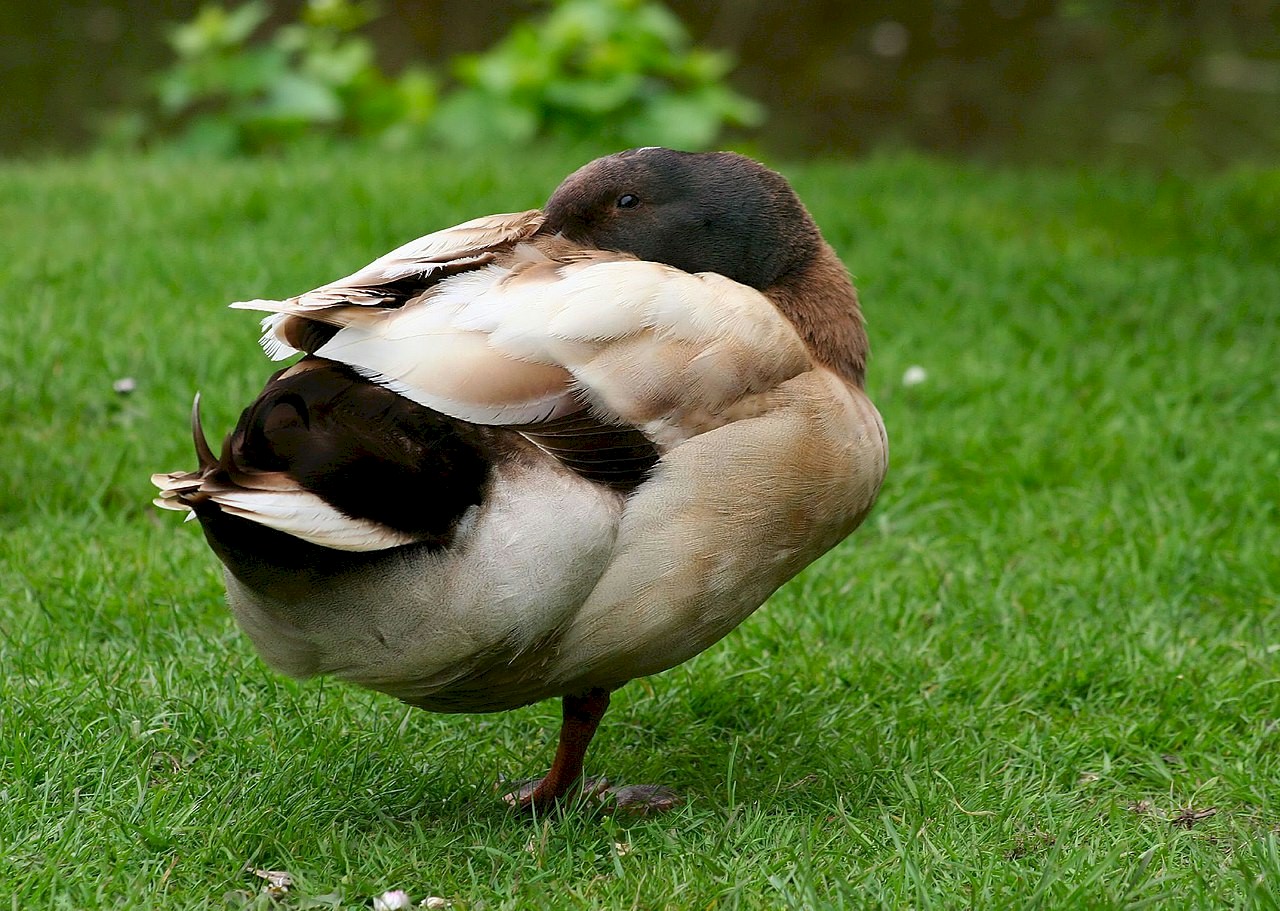
|
The Campbell is a British breed of domestic duck that is known for its high egg production. They come in a variety of colors, including black, chocolate, khaki, and blue.
They were developed by crossing between Mallard, Rouen and Runner ducks. The Khaki Campbell drake is mostly khaki-colored with a darker head, usually olive green, lacking the white ring of its Mallard ancestors. The Khaki Campbell duck has a more modest plumage of Kha
...
|
|
 Canard de Bourbourg Canard de Bourbourg
|
|
|
The Canard de Bourbourg, also known as the Bourbourg duck, is a breed of domestic duck that is native to France. This breed is known for its distinctive appearance, including its bright white plumage and black head. The legs and beaks are also black, adding to its striking appearance.
The Canard de Bourbourg is primarily kept for its meat, as it is known for being a good layer and for having a rich and flavorful flesh. The breed is als
...
|
|
 Cayuga Cayuga
|
|
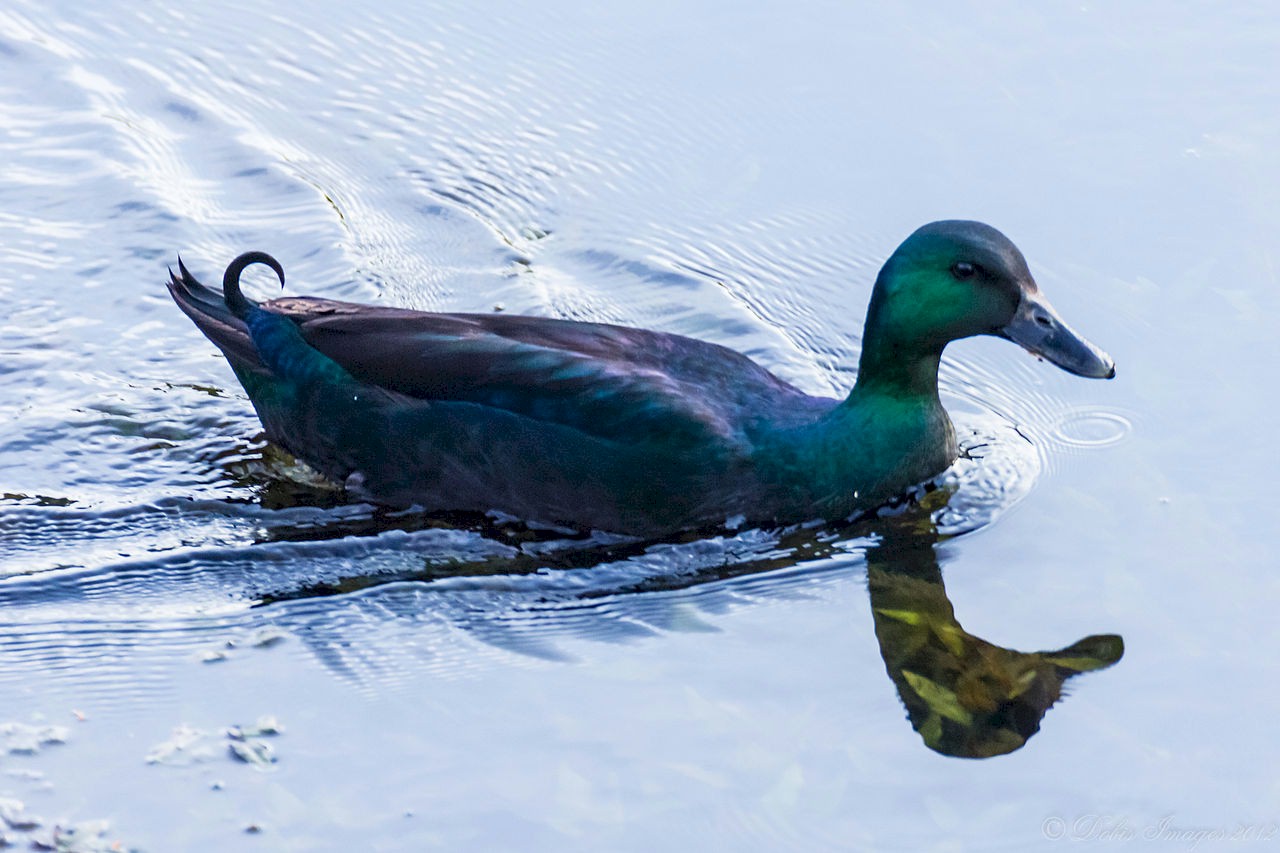
|
The Cayuga is a breed of domestic duck with glossy, greenish-black feathers. They are also known for their meat and eggs.They were introduced to the Finger Lakes region of New York State in about 1840, and are named for the Cayuga people of that area.
They are a medium to heavy duck with a weight range of 8 pounds for adult drakes and 7 pounds for ducks. Its feathers are black with a gleaming beetle-green iridescence, however, some
...
|
|
 Crested Crested
|
|
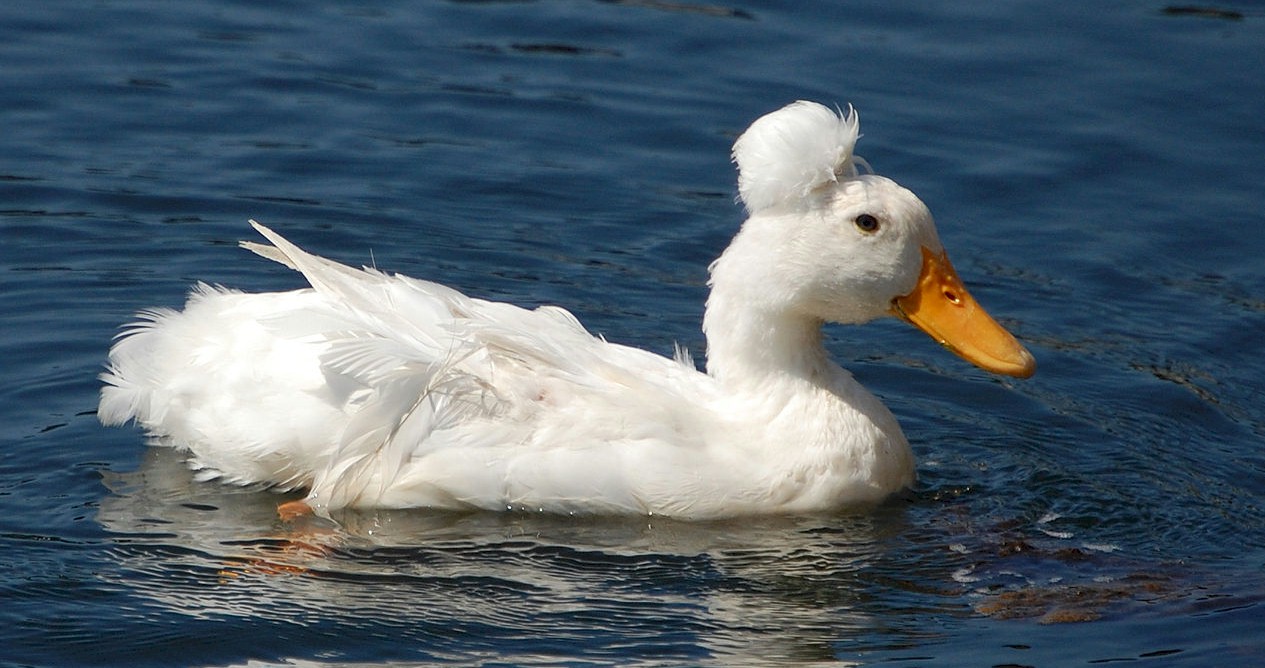
|
Crested ducks have a fluffy bump on the back of their heads. The bump is a result of a genetic mutation causing a deformity of the skull.
The Crested duck, apart from its distinctive crest, has a typical medium-sized appearance. Its color may vary, although in the US only black and white are recognized, while in the UK and some other European countries, any color is allowed. The crest of the Crested duck can range from small to large,
...
|
|
 Crevecouer Crevecouer
|
|
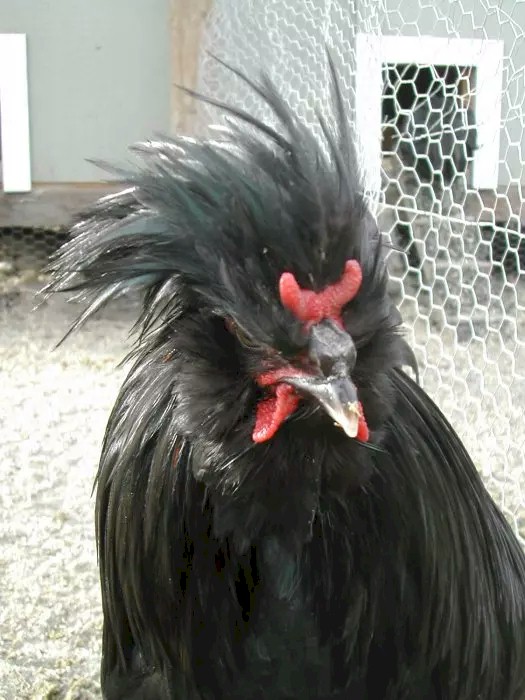
|
Crevecouer are a breed of domestic duck originating in France. They are known for their meat production. They have a unique feather pattern and are often used for exhibitions. They get their name from the town of Crevecoeur-en-Auge in the Calvados region of Normandy, France.
The Crevecoeur is a medium-sized duck, with a distinctive and attractive feather pattern of black and white feathers that resemble a laced design. It is also known f
...
|
|
 Deshi Black Deshi Black
|
|
|
The Deshi Black is a breed of domestic duck that originates from Bangladesh. It is a highly prized and popular breed in Bangladesh, where it is known for its dark black plumage, large size, and meat quality. The Deshi Black is highly adaptable to various climates and conditions, and is often kept by small farmers and homesteaders. The breed is also known for its good egg production, with hens laying an average of 100-120 eggs per year. The meat o
...
|
|
 Duclair Duclair
|
|
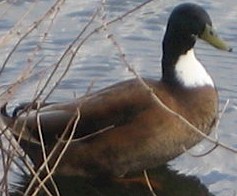
|
The Duclair is a breed of duck that was named after the town of Duclair in Normandy, France. It is a type of Rouen duck and is similar to the Swedish Blue. Official standards for the breed were established in 1923.
Duclair ducks are prized for their meat, which has been described as having a unique flavor, tasting like a cross between veal and lamb. Males of the breed can weigh up to 6.6 pounds and females up to 5.5 pounds. There are t
...
|
|
 Dutch Hookbill Dutch Hookbill
|
|
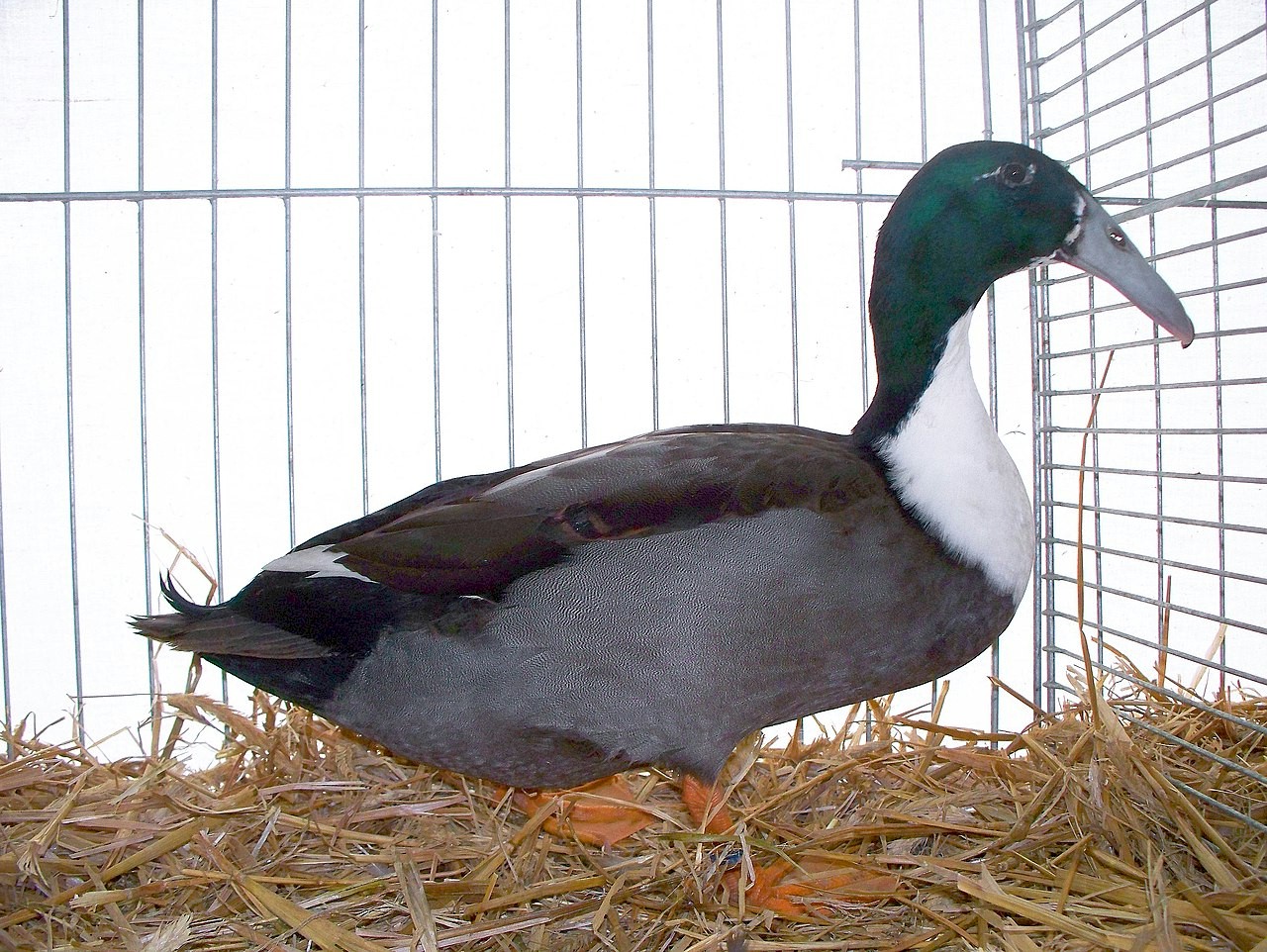
|
The Dutch Hookbill, also known as the Hook Bill, is a unique breed of domestic duck recognized by its distinct downward-curved beak. This breed has a long history, dating back to the 17th century. Despite some speculation, there is no evidence to support the idea that it originated in Asia or has any connection to the Indian Runner duck.
The Hook Bill can be kept for both ornamental purposes and for showing in exhibitions. Additionally
...
|
|
 East Indie East Indie
|
|
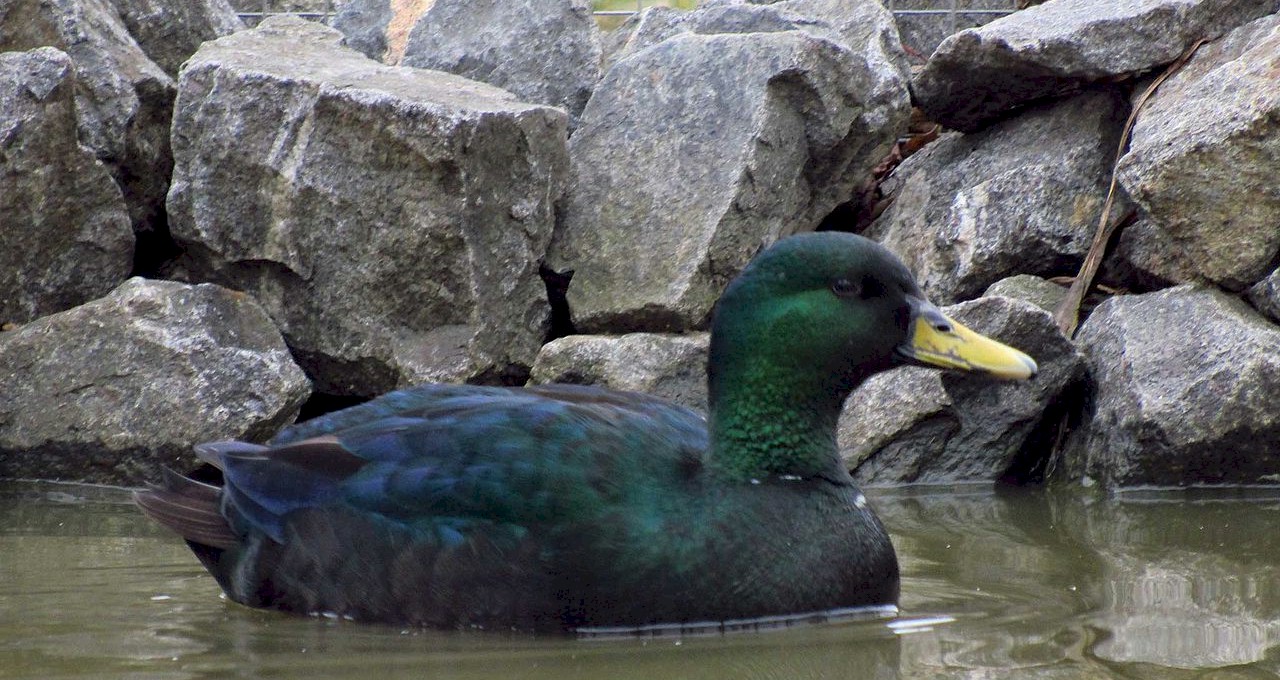
|
East Indie or Black East Indian Ducks are an ornamental breed of bantam Ducks. They are one of the oldest breeds of bantam ducks. They are thought to have originated in the United States, but their precise origin is not known. At various times they have been known by other names, such as Brazilian, Buenos Airean, or Labrador ducks. There is, however, no documented connection to the East Indies, to South America, or to Labrador. East Indies are la
...
|
|
 Elizabeth Elizabeth
|
|
|
The Elizabeth Duck is a unique type of domesticated duck that originated in Australia. These birds are primarily raised for their meat, although they also lay eggs in limited numbers. They have a reputation for being friendly and easy to care for, making them a popular choice for those interested in raising ducks.
Due to the fact that the Elizabeth Duck is only found in Australia and New Zealand, the breed is considered endangered by t
...
|
|
 Estaires Estaires
|
|
|
Estaires Ducks are a breed of French ducks known for their yellowish-white feathers. They grow rapidly, reaching a weight of 5 to 5 and a half pounds (2 to 2.5 kg) in a short period of time.
These ducks are primarily raised for their eggs, as they are known to be good layers. Although, the meat from the Estaires Ducks is considered to be average in quality by most.
The breed originated in the Estaires département of France,
...
|
|
 Faroese Faroese
|
|
|
The Faroese duck is a breed of domestic duck that originates from the Faroe Islands, an autonomous territory of Denmark located in the North Atlantic Ocean. The breed is a hardy, slow-growing bird that is well-suited to the harsh weather conditions of the Faroe Islands.
Faroese ducks are known for their unique appearance, with a distinctive crest on their heads and a curly feather pattern. The ducks come in a variety of colors, includi
...
|
|
 Forest Forest
|
|
|
The Forest Duck, also known as the Eastern Forest Duck or the Eastern Wood Duck, is a species of wild duck native to North America. The Forest Duck is a medium-sized duck that is known for its striking appearance, with a colorful plumage and a distinctive crest on its head.
The Forest Duck is a migratory bird, spending its summers in the northern United States and Canada and its winters in the southern United States, Mexico, and Centra
...
|
|
 Germanata Veneta Germanata Veneta
|
|
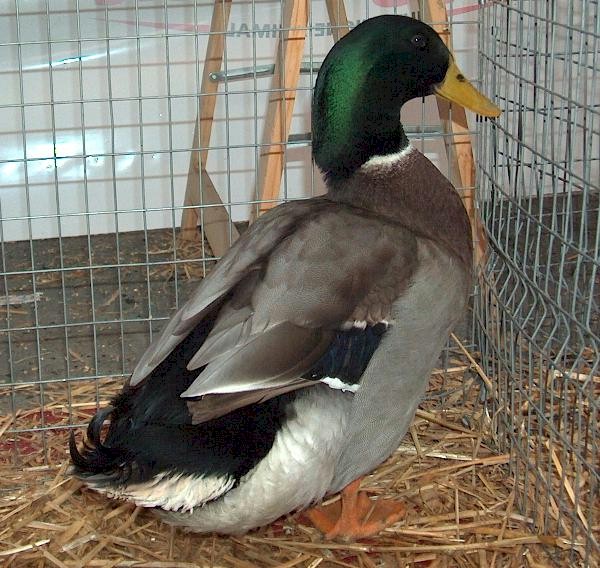
|
The Germanata Veneta duck is a breed that originated in the Veneto region of northern Italy. They are known for their rustic nature and are often used to produce fat livers for pâté by crossbreeding with the Barberia duck.
The female Germanata Veneta duck has a lower egg production rate compared to other breeds such as the brown Tsaiya and Pekin ducks, producing only 100 to 120 eggs per year. The eggs produced by the breed are white,
...
|
|
 Gimbsheim Gimbsheim
|
|
|
The Gimbsheim Duck is a breed that is easily recognizable by its distinctive coloration and physical characteristics. The breed has gray feathers and a dark head, with slate gray shanks and feet. The male Gimbsheim Duck is distinguishable by its greenish-yellow beak, while the female has a gray beak.
The Gimbsheim Duck is a good layer, producing eggs that weigh approximately 70 grams and have a yellowish to greenish shell. In terms of
...
|
|
 Golden Cascade Golden Cascade
|
|
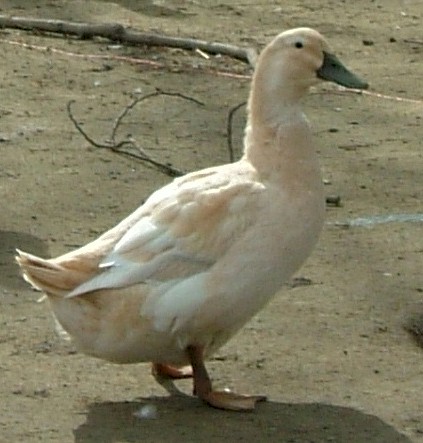
|
The Golden Cascade is a breed of domestic duck that was developed in the United States. It was created by David Holderread in 1979 with the aim of creating a breed that was fast-growing, active, a good layer, and capable of auto-sexing. By the mid-1980s, the breed was introduced to the market. However, it is not yet recognized by the American Poultry Association's Standard of Perfection.
The breed was named for its golden brown color a
...
|
|
 Gressingham Gressingham
|
|
|
Gressingham ducks are a hybrid breed of domestic duck created by crossing a male Mallard with a female Pekin duck. This breed was first developed in the 1970s by the Gressingham Foods Ltd. in England and was named after the village of Gressingham, where the company was located.
Gressingham ducks have a unique flavor and are prized for their rich, tender meat. They are considered to be a gourmet bird and are often used in high-end cuisi
...
|
|
 Harlequin Harlequin
|
|
|
Harlequin ducks (Histrionicus histrionicus) are small, sea ducks that are native to the North Atlantic and Arctic regions. They are known for their distinctive, colorful plumage, which features a bold pattern of white, black, and chestnut brown.
Harlequin ducks are migratory birds, spending their summers in the high Arctic breeding grounds and their winters along coastal regions and estuaries. They feed primarily on small crustaceans, mo
...
|
|
 Haut-Volant Haut-Volant
|
|
|
Haut-Volant is a breed of domesticated ducks that are raised primarily for their meat and eggs. The breed is believed to have originated in the area around Hauts-de-France in Northern France, hence the name "Haut-Volant," which means "High-Flying" in English.
Haut-Volant ducks are medium-sized birds with a plump, round body and a relatively short neck. They have a distinctive black bill, orange legs and feet, and a chestnut brown head.
...
|
|
 Havanna Havanna
|
|
|
Havanna is a breed of domesticated ducks that are raised primarily for their meat and eggs. They are also sometimes kept as ornamental or pet ducks, due to their distinctive appearance and calm demeanor.
They are medium-sized birds, with a plump body and a distinctive dark blue-black plumage. They have orange bills and legs, and a distinctive green head and neck. They have a calm and docile personality, making them easy to handle and c
...
|
|
 Herve Herve
|
|
|
Herve is a breed of domesticated ducks that are raised primarily for their meat and eggs. They are native to the area around Herve, a town in the province of Liège in Belgium, hence the name "Herve."
Herve ducks are medium-sized birds, with a plump body and a distinctive brown plumage that is speckled with white and black. They have a calm and docile personality, making them easy to handle and care for.
Herve ducks are fast-
...
|
|
 Huttegem Huttegem
|
|
|
Huttegem is a breed of domesticated ducks that are raised primarily for their meat and eggs. They are native to the region of Flanders in Belgium, and are named after the town of Huttegem.
Huttegem ducks are medium-sized birds, with a plump body and a distinctive white plumage. They have a calm and docile personality, making them easy to handle and care for.
Huttegem ducks are fast-growing birds, and are considered a good ch
...
|
|
 Idegem Idegem
|
|
|
Idegem Ducks, also known as Canard de Gavre or Canard d'Idegem, are versatile birds that are valued for both their hunting and culinary qualities. They originated in the Idegem and Grammont regions of Belgium. They are small, typically weighing between 3.3 to 3.7 pounds (1.5 to 1.7 kg.).
They have thin shanks and medium-sized beak and neck which gives them a unique look. Idegem Ducks are known for their distinctive appearance, with fe
...
|
|
 Indian Runne Indian Runne
|
|
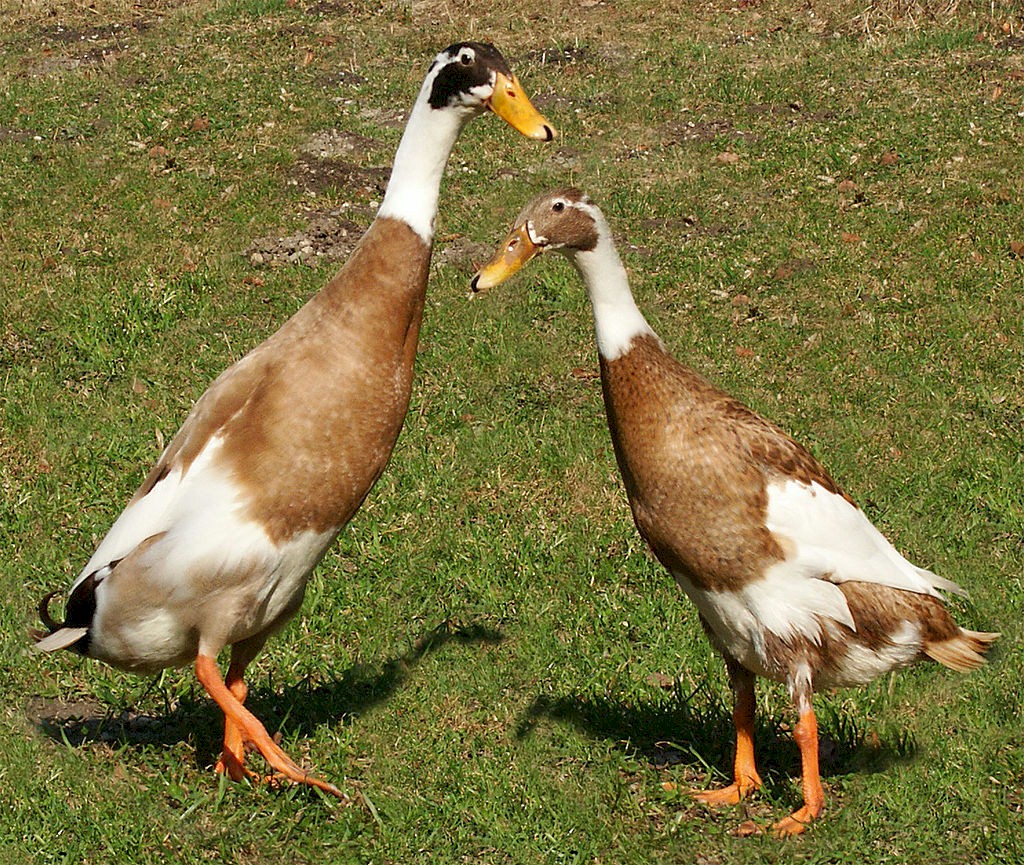
|
The Indian Runner duck is a breed of domestic duck that is known for its distinctive upright posture and quick speed. They are popular for their high egg production, with females typically laying between 300 to 350 eggs per year.
Due to their upright stance, Indian Runners run rather than waddle, and they are not capable of flying. They have a tendency to drop their eggs wherever they happen to be, rather than incubating them in a nes
...
|
|
 Laplaigne Laplaigne
|
|
|
Laplaigne Ducks, or Canard de Laplaigne, are a Belgian breed of ducks that are highly regarded for their delicious meat. They are known for their unique beaks, which can range from colors such as greenish. There is also a white-feathered variety of the duck that has an orange bill.
Laplaigne Ducks originated from the marshy fields bordering the Escaut River in the Tournai region of Belgium. They were typically foraged for food in the
...
|
|
 Magpie Magpie
|
|
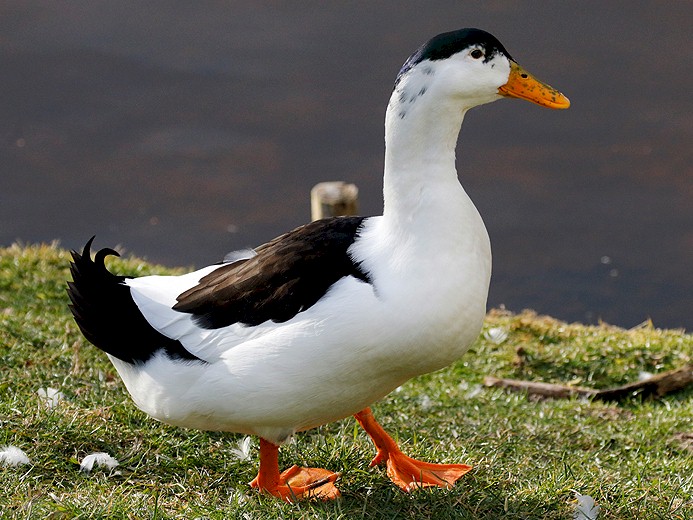
|
Magpie Ducks are a British breed of domestic fowl. They have distinctive black and white markings reminiscent of the European magpie, and are a good layer of large eggs.
They are commonly reared for showing. They were originally bred as a commercial or utility bird, to provide meat and eggs. They lay approximately 80 eggs per year. They vary in color from white to pale green, and weigh about 65 g. The 'Paramount' strain reared by Ol
...
|
|
 Mallard Mallard
|
|
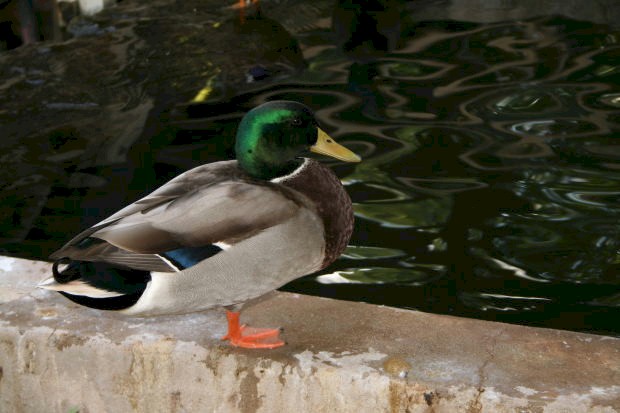
|
The Mallard, also known as the Wild Duck, is a recognizable duck species known for its green head and brown body. This dabbling duck breeds in temperate and subtropical regions across the Americas, Eurasia, and North Africa and has been introduced to several other countries.
The mallard belongs to the Anatinae subfamily of the Anatidae family and is characterized by its size, which is medium in comparison to other dabbling ducks. The m
...
|
|
 Mandarin Mandarin
|
|

|
The Mandarin duck, scientifically known as Aix galericulata, is a perching duck species that is native to the East Palearctic region. It is a medium-sized bird, measuring between 41–49 cm (16–19 in) in length and having a wingspan of 65–75 cm (26–30 in). This species is closely related to the North American wood duck and is the only other member of the genus Aix. The name "Aix" is derived from an Ancient Greek word used by Aristotle to describe a
...
|
|
 Mulard Mulard
|
|
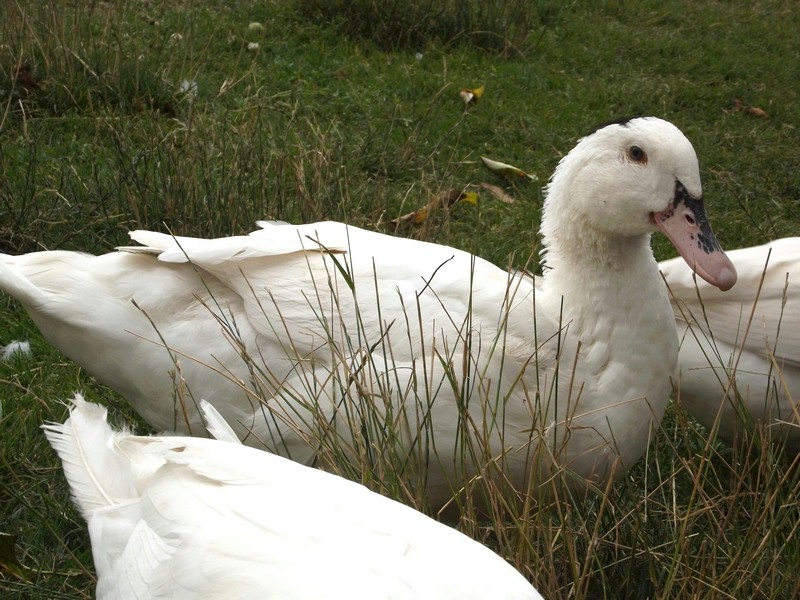
|
Mulard (or Moulard) ducks are a hybrid between Muscovy ducks and other breeds such as wild mallards. American Pekins, and other domestic ducks. Like many interspecific F1 hybrids, mulards are sterile, giving them the nickname mule ducks. While it is possible to produce mulards naturally, artificial insemination is used more often with greater success.
The term mulard is generally reserved for offspring where the parental drake is a Mus
...
|
|
 Muscovy Muscovy
|
|
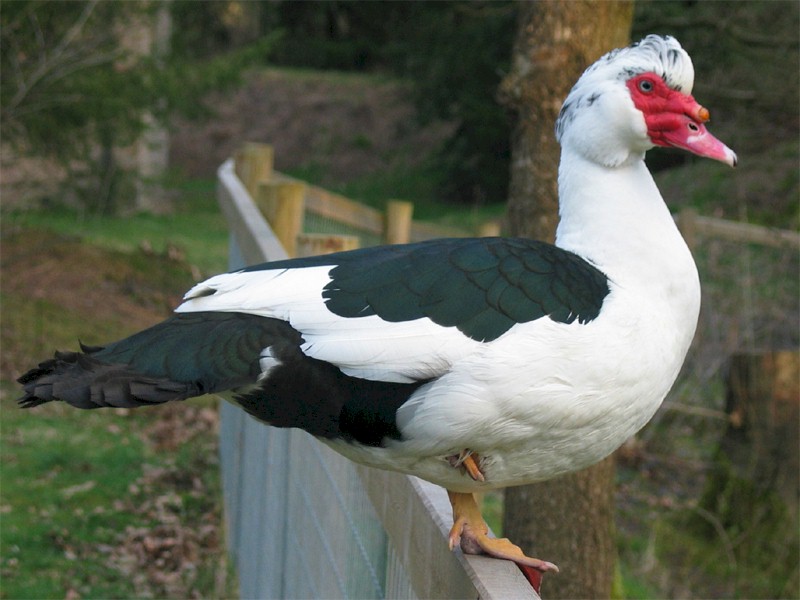
|
The Muscovy Duck (Cairina moschata) is a species of large duck native to Central and South America. It is not a domestic breed of ducks and is not usually kept for egg or meat production. However, it is sometimes kept as a pet or raised for their feathers or as a meat bird in some regions.
Muscovy ducks are large birds with an average weight of 5-7 pounds for males and 3-5 pounds for females. They have distinctive features including
...
|
|
 Pekin Pekin
|
|
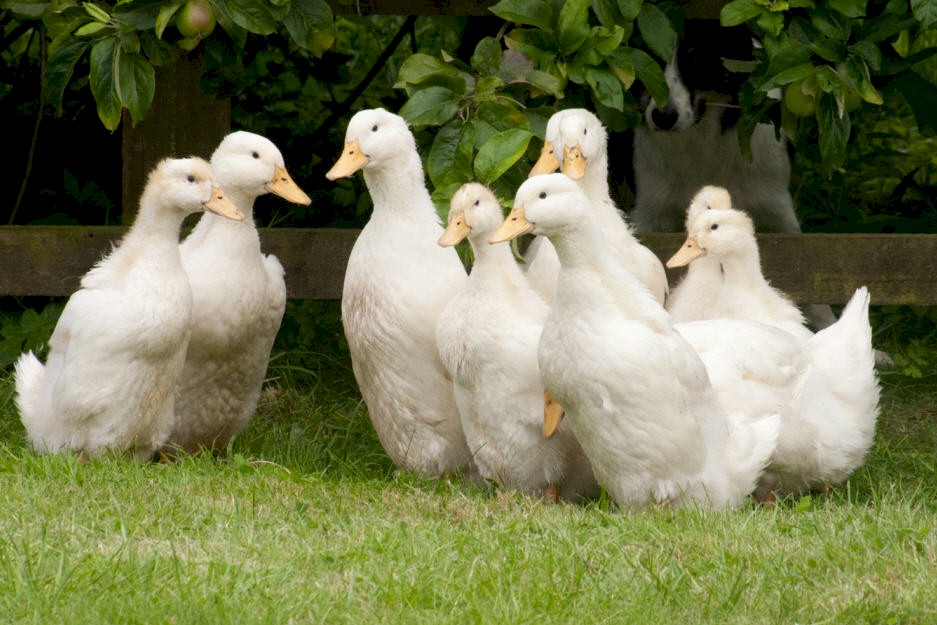
|
The Pekin duck is a domesticated duck breed that is widely kept for meat and egg production, as well as for its ornamental qualities. It is also known as the Long Island duck or the American Pekin.
Pekin ducks have a distinctive appearance with their round, plump body and broad, flat bill. They have a white plumage and orange legs and feet. They are considered a large breed of ducks, with the drakes weighing up to 8 pounds (3.6 kg) and
...
|
|
 Pekin Pekin
|
|
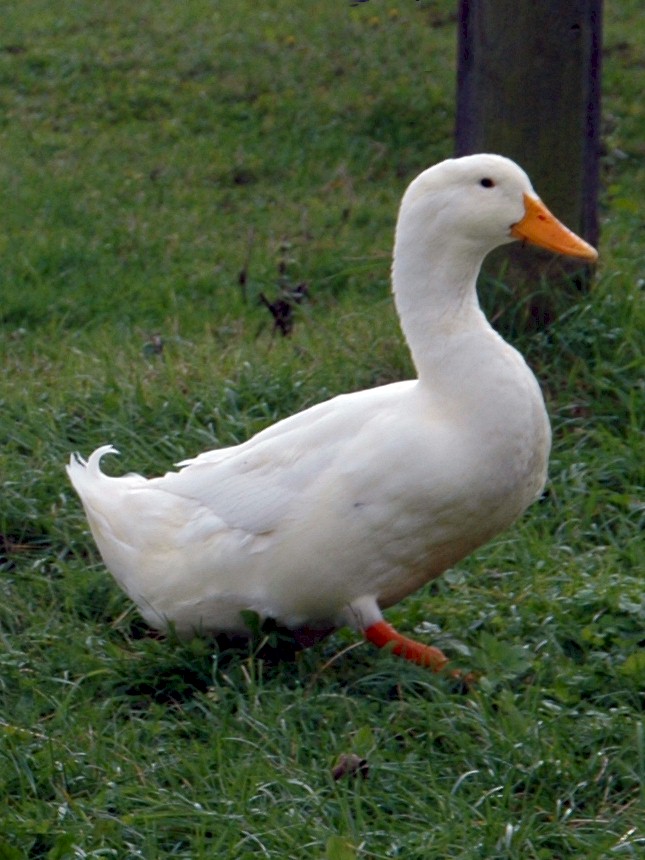
|
The Pekin or White Pekin is an American breed of domestic duck, primarily raised for its meat. The breed originates from birds brought to the United States from China in the 19th century and is now bred in many parts of the world. It is also referred to as the American Pekin to differentiate it from the German Pekin, which is a separate breed that also derived from Chinese stock but has a different breeding history. Many of these ducks were ra
...
|
|
 Pomeranian Pomeranian
|
|
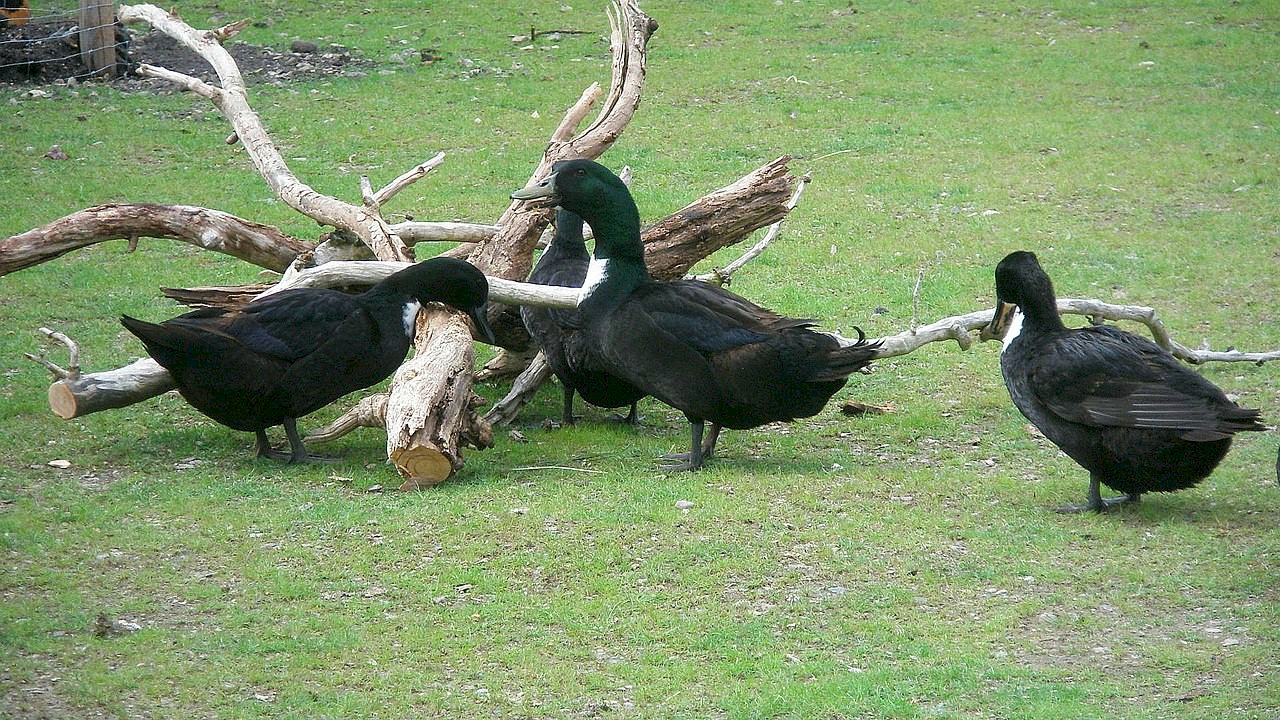
|
The Pomeranian or Pommern duck (in German Pommernente) is a breed of domesticated duck. It is a landrace originating in the German part of the Baltic sea coast region called Pomerania. Pomeranian ducks share the same ancestors with other northern European duck breeds, such as the Shetland duck and Swedish Blue duck.
The Pomeranian duck is a medium-sized bird, male weighs 3 kg; the female usually weighs 2.5 kg. The body is traditionally
...
|
|
 Rouen Rouen
|
|
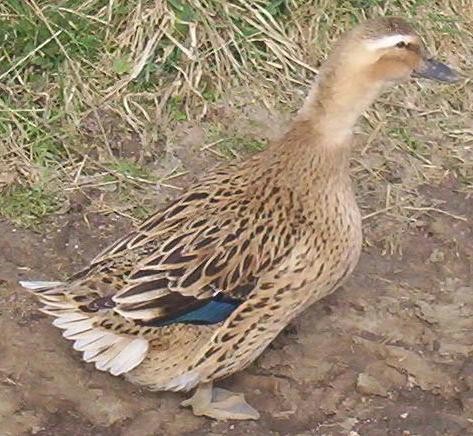
|
Rouen ducks are a heavyweight breed of domesticated duck raised primarily for decoration, exhibition, or as general purpose ducks. Since they are not prolific egg layers, Rouen ducks are most commonly bred for their meat.
Rouen ducks were first raised in France, but it was not until they reached England in the 19th century that they were refined into the breed recognized as the Rouen today. The French version resembled a larger than av
...
|
|
 Runner Runner
|
|
|
The Runner duck, a distinguished member of the domestic duck family, is renowned for its remarkable swiftness and nimble agility, setting it apart from other breeds. Originating from Southeast Asia, this breed has captivated enthusiasts worldwide with its elegant stature and quick movements. Runner ducks are not merely admired for their speed; they also exhibit a kaleidoscope of colors, ranging from classic white and sleek black to eye-catching f
...
|
|
 Saxony Saxony
|
|
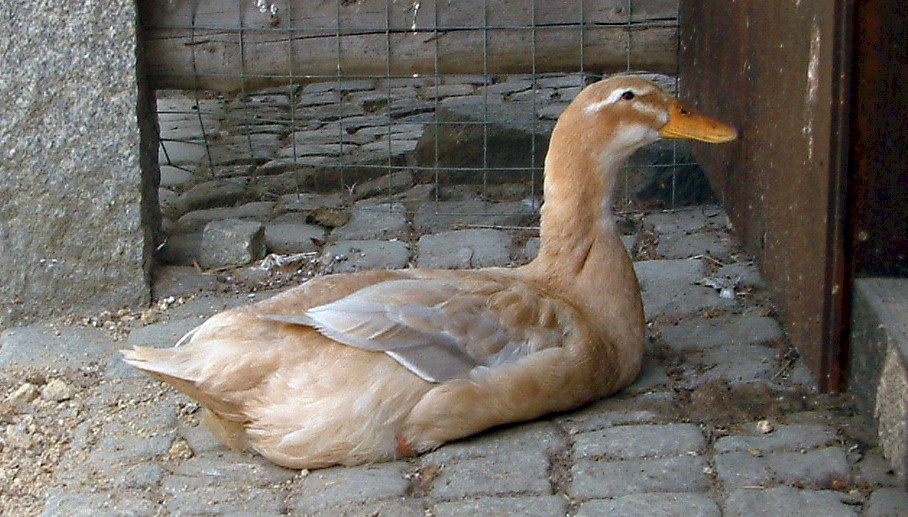
|
The Saxony duck (German: Sachsenente) is a German breed of domestic duck. They are a dual-purpose breed, reared both for its eggs and for meat.
They are a heavy duck breed: drakes weigh about 3.5 kg, ducks about 3.0 kg. They are muscular and close-feathered. Physically, the Saxony resembles the Silver Appleyard. Their head is oval-shaped and is moderately large. The Saxony has a deep, full breast with plenty of width that is carried ac
...
|
|
 Silver Appleyard Silver Appleyard
|
|
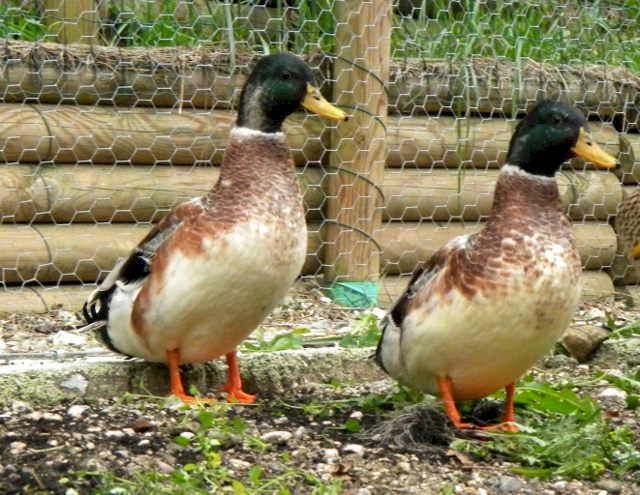
|
The Silver Appleyard Duck, a delightful member of the domestic duck family, is cherished for its striking appearance and amiable disposition. Originating from England, this breed boasts a captivating blend of beauty and utility. With its lustrous silver plumage adorned with subtle hints of lavender and white, the Silver Appleyard Duck exudes elegance and charm. Not merely a feast for the eyes, these ducks are prized for their versatility, excelli
...
|
|
 Swedish Blue Swedish Blue
|
|
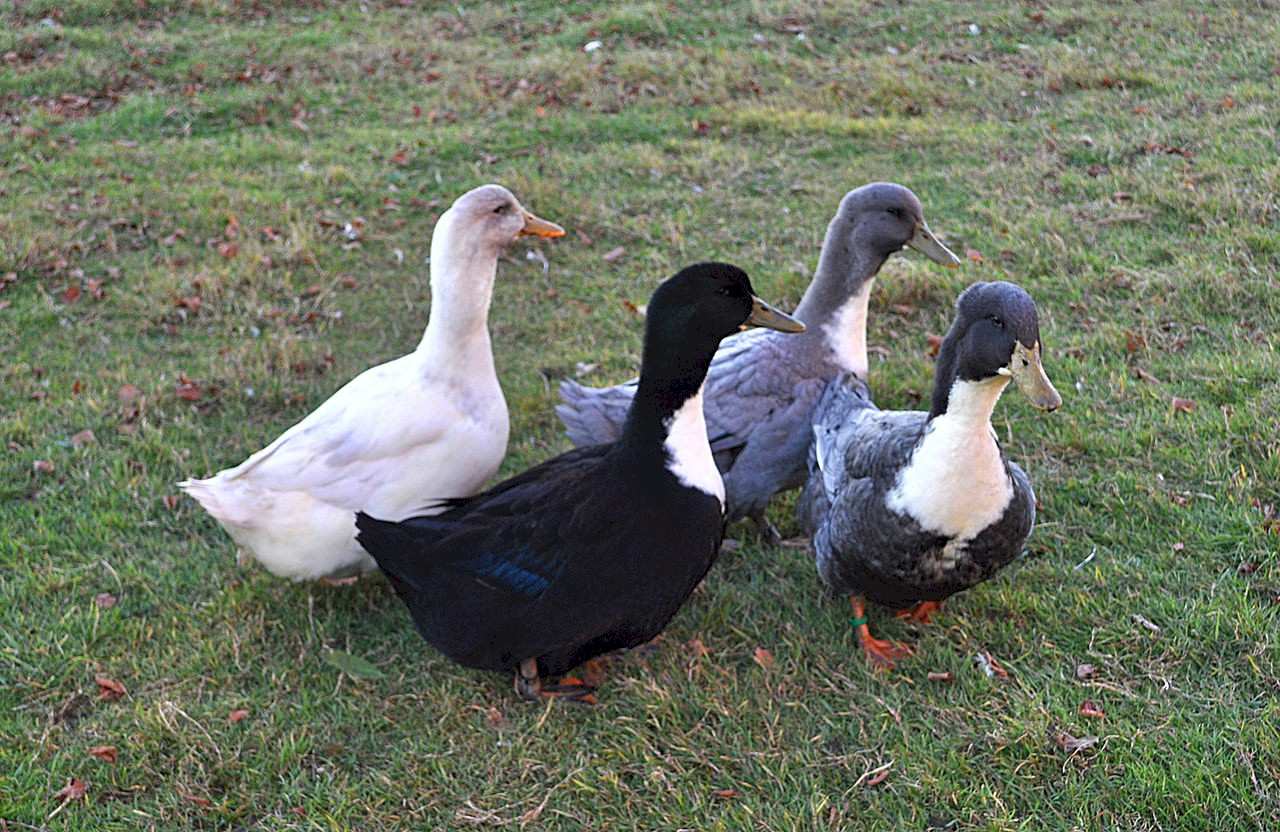
|
Swedish Blue (Swedish: Svensk bla anka), or Blue Swedish, is a breed of domestic duck that is known for its distinctive blue and black feathers. They are often used for meat and eggs.
Swedish blue ducks emerged during the nineteenth century in what was then Swedish Pomerania, now located in north-east Germany. The first documented mention is from 1835. Some of them were exported to the United States in 1884, and they were added to the
...
|
|
 Welsh Harlequin Welsh Harlequin
|
|
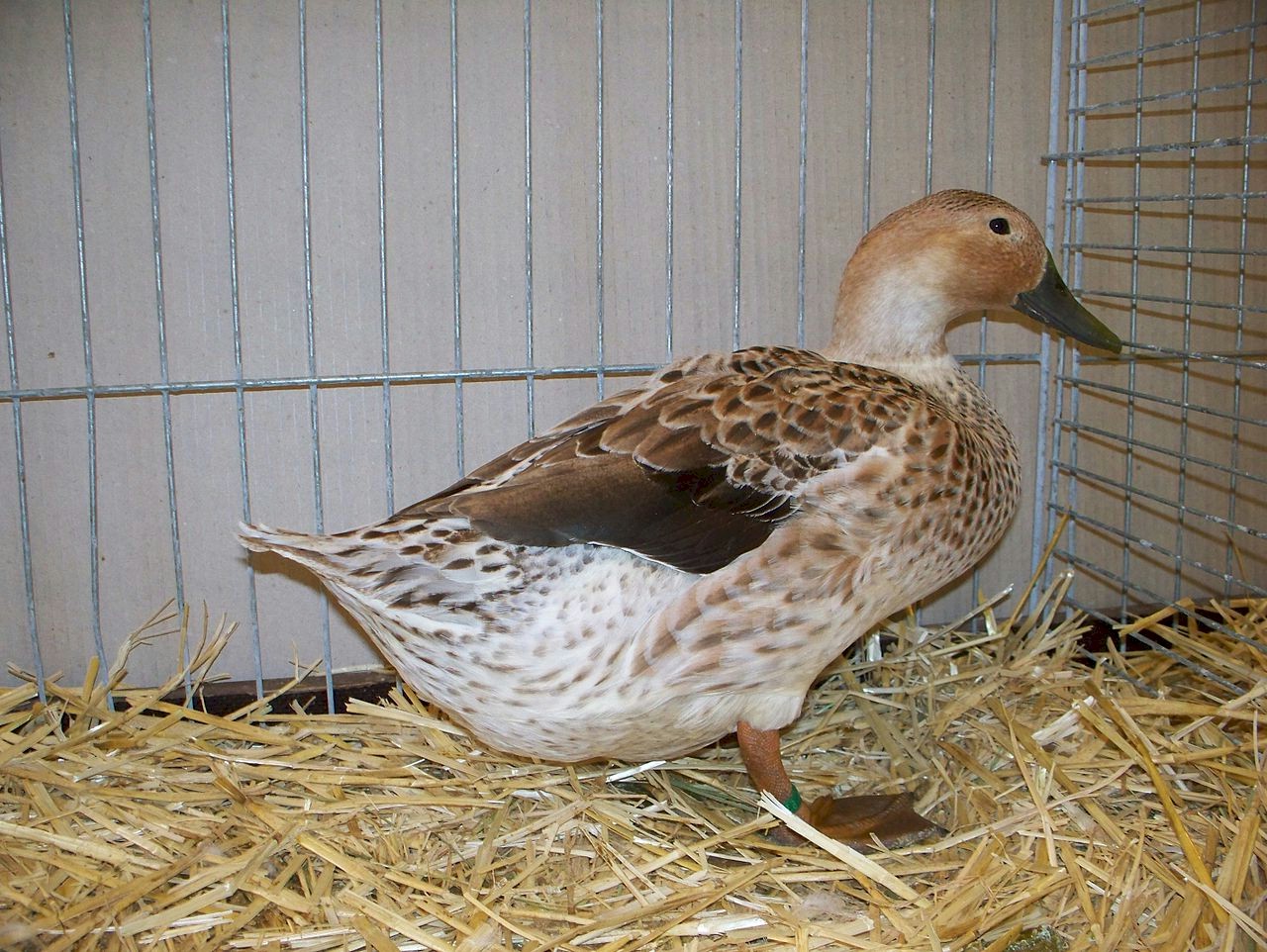
|
The Welsh Harlequin, a charming breed of domestic duck, hails from Wales with a rich history dating back to the mid-20th century. Renowned for its stunning appearance, it showcases a striking blend of vibrant colors reminiscent of the traditional Harlequin pattern, featuring shades of silver, blue, and brown. Originally bred for its exceptional egg-laying abilities, the Welsh Harlequin has gained popularity not only as a prolific layer but also a
...
|
|
 White Pekin White Pekin
|
|
|
The White Pekin, a domestic duck breed akin to the Pekin, boasts a pristine white plumage. Renowned for its versatility, it serves as a popular choice for both meat and egg production. With its pure white hue, this breed embodies elegance and is prized for its culinary attributes.
|
